The Strand is a brilliant concoction of
a flagrant history and a reimagined future. It is a street that has survived
catastrophe, economic collapse, and traveled the most treacherous journey of
all, through the merciless sands of time. The portion of Galveston’s Strand
Street between 20th and 25th Streets is called simply,
“The Strand.” It runs east to west, parallel to the harbor only a block away,
and in the late 19th century when that harbor was a commercial mecca
of shipping, banking, wholesaling, and trading, The Strand was dubbed, “the
Wall Street of the South.”
Today, almost all of the ornate Victorian buildings from that time still
stand, and the street is all at once an historical monument and a modern
playground, ripe with the creativity of retailers and chefs, lined with
novelties, exotics, parks, and taverns. The evolution of The Strand over nearly
two centuries is a testament to the dedication of the Galveston community to preserve
its history while also forging a path to the future. But its very existence is
ultimately due to the Island’s geographical advantage as a natural port.
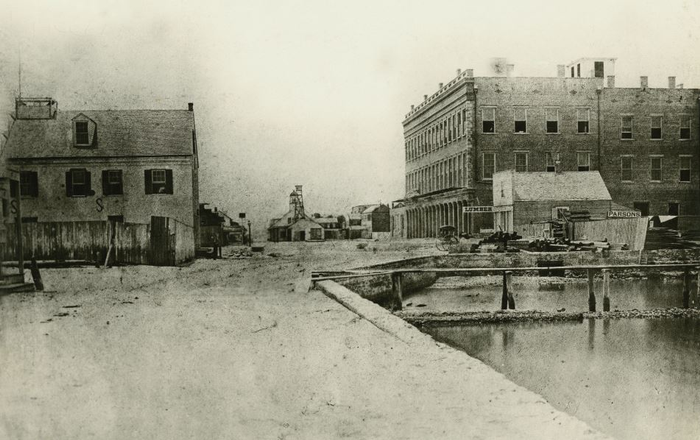 Galveston Island is 32 miles long and not even two miles across at its
widest point; it sits just off the coast of Texas fifty miles from Houston.
Toward the eastern side of the island between the shore and the mainland is
nestled another, smaller land mass called Pelican Island. The positioning of
these two islands creates a perfect harbor along Galveston’s northern
shoreline, a fact that was first capitalized upon by the pirate Jean Lafitte at
a time when Texas was still a part of Mexico.
Galveston Island is 32 miles long and not even two miles across at its
widest point; it sits just off the coast of Texas fifty miles from Houston.
Toward the eastern side of the island between the shore and the mainland is
nestled another, smaller land mass called Pelican Island. The positioning of
these two islands creates a perfect harbor along Galveston’s northern
shoreline, a fact that was first capitalized upon by the pirate Jean Lafitte at
a time when Texas was still a part of Mexico.
Lafitte seized control of the Island from the indigenous Karankawa tribe
in 1817, but he remained only until 1821 when the United States Navy, in an
alliance with the Mexican government, let him know that his presence was no
longer required. After Lafitte’s exit, a small trading post was established in
1825, but the island would remain mostly vacant for another decade.
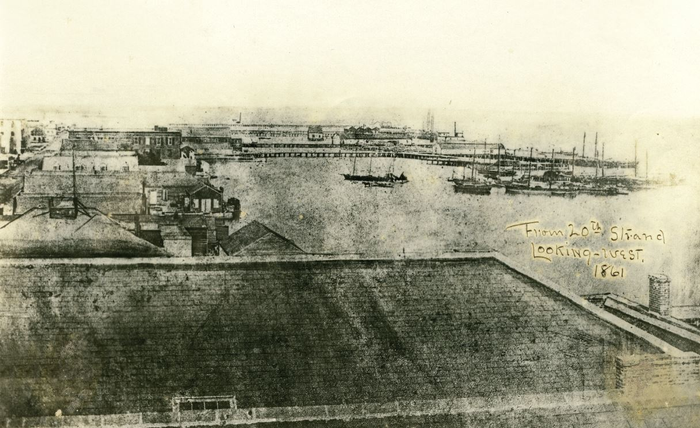 Meanwhile, an illiterate fur trader from Quebec was making his way
south, learning to read and write and establishing himself as a keen and adept
merchant. In 1829, Michel B. Menard applied for citizenship to Nacogdoches, and
upon arriving in Texas he formed a powerful alliance with Juan Seguin as his
Mexican headright. Land in Texas could only be purchased from a Mexican citizen
and Seguin, who would years later fight beside Texans in their war for
independence, was able to secure for Menard land speculations totaling nearly
40,000 acres by 1834. Of those were 6,640 acres on Galveston Island.
Meanwhile, an illiterate fur trader from Quebec was making his way
south, learning to read and write and establishing himself as a keen and adept
merchant. In 1829, Michel B. Menard applied for citizenship to Nacogdoches, and
upon arriving in Texas he formed a powerful alliance with Juan Seguin as his
Mexican headright. Land in Texas could only be purchased from a Mexican citizen
and Seguin, who would years later fight beside Texans in their war for
independence, was able to secure for Menard land speculations totaling nearly
40,000 acres by 1834. Of those were 6,640 acres on Galveston Island.
Strategically located on the part of the island with the highest
elevation, the six thousand acres also included the land along the harbor
front, making it ideal for development of a port city. Because of governmental
stipulations that required permission from the President, however, Menard was
not able to develop it until Texas won its independence from Mexico in 1836.
Following the Republic’s victory, that same year the first American
settlement of Galveston formed on the east portion of where Strand Street is
today, on the current site of the University of Texas Medical Branch. It was a
“city” comprised entirely of tents, protected from the rising tide of the
harbor by large ridges of shale.
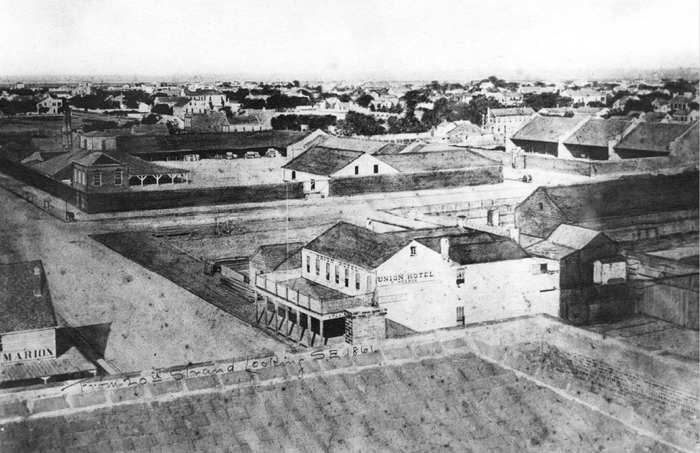 By 1838, Menard was able to complete the organization of the Galveston
City Company, and the first lot was sold on April 20th of that year.
By 1838, Menard was able to complete the organization of the Galveston
City Company, and the first lot was sold on April 20th of that year.
Aside from some minor modifications after The Great Storm of 1900, the
original plat of the city has predominantly stayed the same. Numbered streets
run north to south along the length of the island, and lettered streets run
east to west from the harbor to the Gulf. Downtown in the commercial district,
the lettered streets were also eventually named.
At
the city’s inception, Avenue A (present day Harborside Drive) was basically the
harbor shoreline, meaning that it was almost always entirely underwater. On the
very first plat of the city of Galveston, Avenue B was called Common Street.
But that was the first and only time it would bear that name.
Galveston’s Strand was named after the Strand in London. Linguistically
the word itself is somewhat fitting, as it is derived from the Old English strond, which means “along the edge of a
river;” London’s Strand once ran along the River Thames. More importantly, the
nomenclature indicated high aspirations for the future of the island city, as
its namesake in the 19th century was a lively thoroughfare of
commerce and culture.
The Port of Galveston was established as instantly as the city began,
and The Strand embarked upon its figurative ascent to
prominence, although it would take a full thirty years before it was even
paved. In the early days of Strand Street, it was highly susceptible to high
tides and rain which created a bog of mud and slime. Oyster shells were dumped
onto the street in mass quantities in an attempt to alleviate the marsh-like
conditions, but they were relatively ineffective after only a few days of being
crushed under horse hooves and wooden wheels.
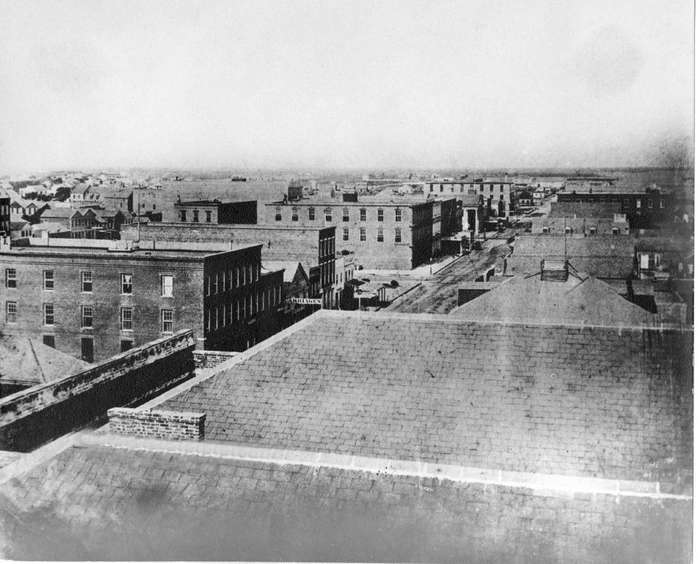 But even these conditions did not deter the inevitable rise of The
Strand. Fueled by Texas’ prolific production of cotton, and prompted further by
all of the potential garnered from an international port, the success of
Galveston and its port were imminent. Warehouses, commission houses, merchants,
traders, seamen, shipbuilders, and the like were all drawn to the lucrative
endeavors that Galveston had to offer.
But even these conditions did not deter the inevitable rise of The
Strand. Fueled by Texas’ prolific production of cotton, and prompted further by
all of the potential garnered from an international port, the success of
Galveston and its port were imminent. Warehouses, commission houses, merchants,
traders, seamen, shipbuilders, and the like were all drawn to the lucrative
endeavors that Galveston had to offer.
Along the north side of the street, buildings were built on pilings that
jutted out over the water which covered Avenue A. Storeowners could ship and
receive right out of their back doors, and anecdotes tell of employees going to
the second floor on their breaks and fishing out of the window.
One of the first merchants to build on the strand was John M. Jones, who
built a two-story wooden structure near 23rd Street in 1839. He
placed a sign over the door of his business that read, “No. 8 Strand,” and he
was known as such for many years. Jones was a watchmaker and a jeweler, the
first in Galveston, “and repaired and put in order most of the timepieces in
this section of the republic of Texas” (News,
25 October 1908).
George Ball, who would go on to become one of Galveston’s most notable
businessmen, arrived about that time as well. He was also a jeweler and
watchmaker and opened a business with his brother Albert on Market Street, but
soon the business expanded and moved to the Strand.
In March of 1839, the very first city council of Galveston met in a
two-story wood-frame building near the intersection of Strand and 17th
Street. Later the building was moved a few blocks west, to the south side of
the street between 21st and 22nd.
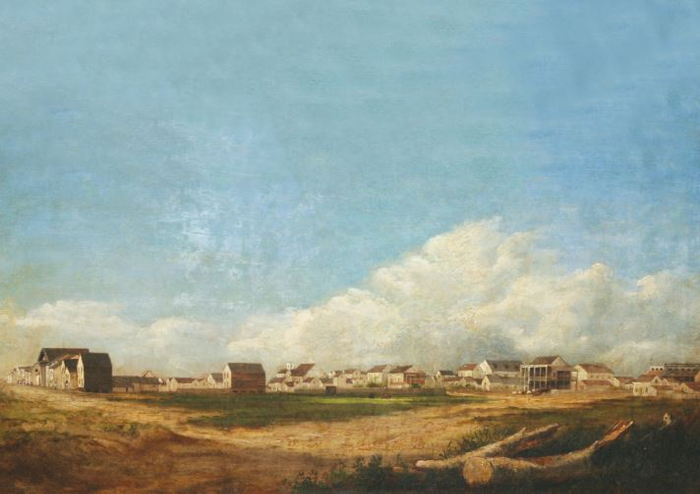 Another early transaction of the Galveston City Company was the sale of
the lot on the northwest corner of Strand and 23rd Street to Moro
Philips, who erected a two story building larger than any other at the time.
Known as Moro Castle, its foundation was pilings that rose four or five feet
above the street. County records show that in 1840 Moro purchased a license for
“two establishments retailing liquor, ten-pin alley and two billiard tables.”
After retiring from Galveston Moro returned to his home of Philadelphia, and
when he passed left behind an estate valued at $4 million.
Another early transaction of the Galveston City Company was the sale of
the lot on the northwest corner of Strand and 23rd Street to Moro
Philips, who erected a two story building larger than any other at the time.
Known as Moro Castle, its foundation was pilings that rose four or five feet
above the street. County records show that in 1840 Moro purchased a license for
“two establishments retailing liquor, ten-pin alley and two billiard tables.”
After retiring from Galveston Moro returned to his home of Philadelphia, and
when he passed left behind an estate valued at $4 million.
One of the first brick buildings built on the Strand was situated at the
corner of 25th Street. This was the building where Gail Borden, of
condensed milk fame, would conduct his first food preservation experiments.
From here he put up his first product known as Borden’s “compressed meat
biscuit.” Unfortunately Galveston could not contain his genius, and he left in
the 1850s to pursue his eventual, enormous success.
As the commercial district began to flourish, likewise its perimeter
began to burgeon with residential areas. In place of the original “tent city”
east of the district, a neighborhood sprang up of wooden homes and shotgun
houses. In addition to permanent residences, the Strand and adjacent streets
were lined with boarding houses for sailors, travelers, and immigrants.
Even before the city was established as a commercial port, Galveston was
claimed as a gateway to Texas for European immigrants. The influx increased
even further upon the independence of Texas, and it became a critical element
in Galveston’s identity. The infusion of international cultures upon the
general population from the very onset of the city gave birth to an eclectic
diversity and marked European influence in both its economy and architectural
designs.
As the newest, largest, and fastest growing
city in Texas, Galveston and its gem of a port were well on their way to making
history, and the city boasts a long list of firsts in Texas. In just its first
decade of existence, Galveston became home to the Texas’ first post office,
naval base, bakery, cotton compress, and grocery store. By 1850, the city had
gone from zero residents to over five thousand, and over the next thirty years,
despite war and abandonment, that number would more than quadruple.
Chapter 1 - 2 - 3 - 4 - 5 - 6 - 7- 8 - 9 - 10 -11 - 12